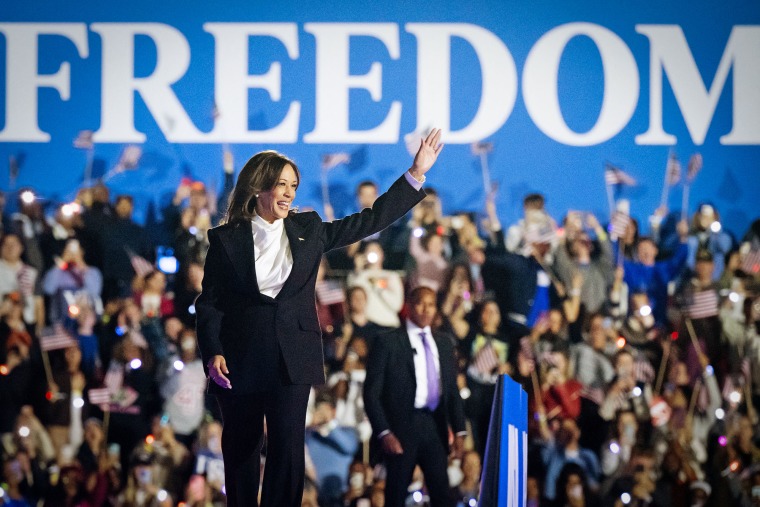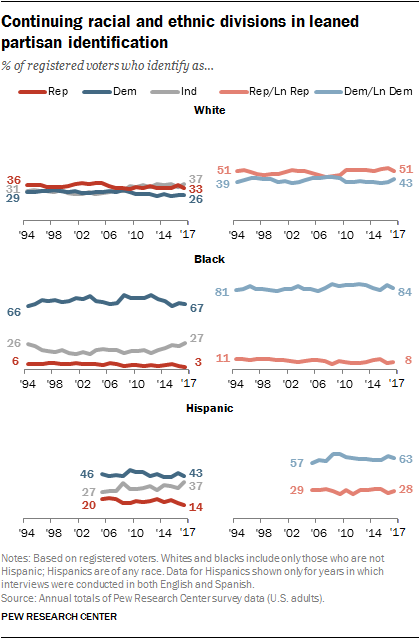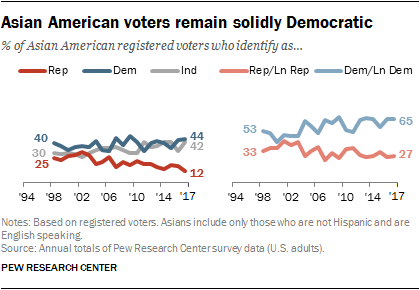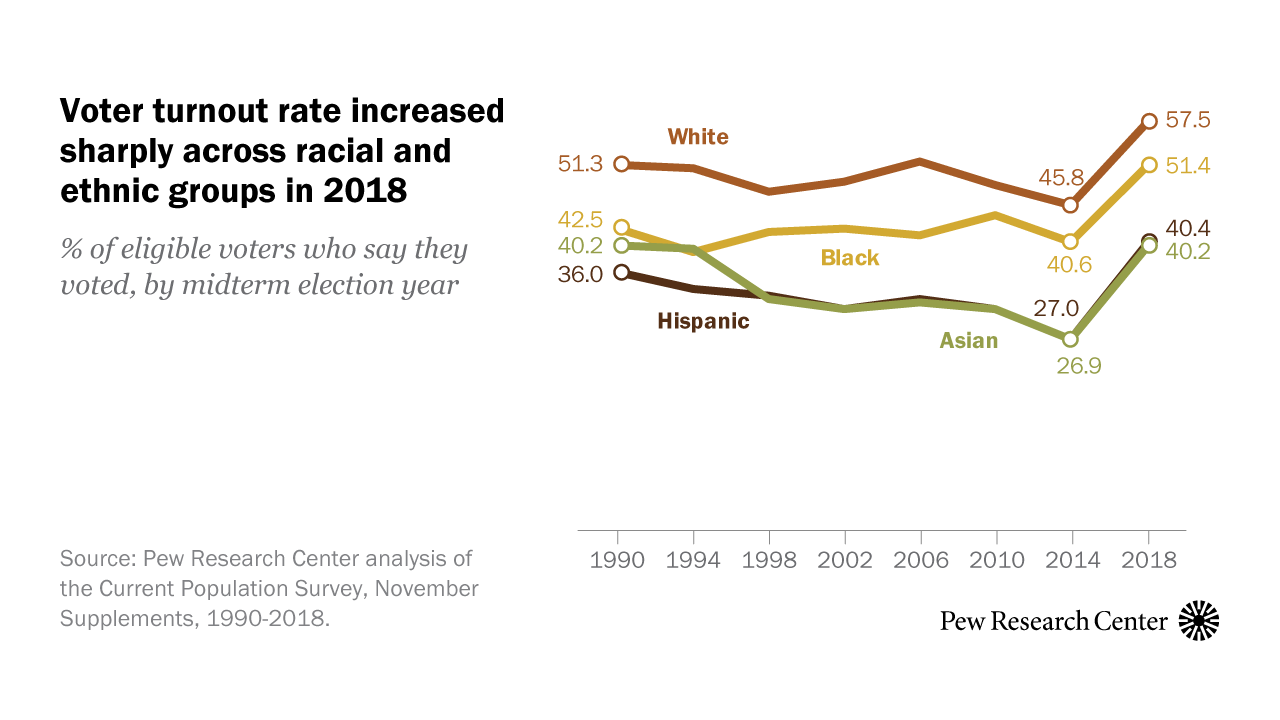POLS 1140
Race and Ethnicity
Updated Mar 9, 2025
Monday
Plan
Broad overview of the field:
Theories of Race and Ethnicity
Racial and Ethnic Politics
- Racial Gaps
- Race and Group Interactions
- Race and Representation
- Race as Social Identity
Wednesday
- “Selling out” White, Laird, and Allen (2014)
Friday
- “Racial Spillover” Tesler (2012)
Neologisms
Wednesday
Plan
Wednesday
- “Selling out” White, Laird, and Allen (2014)
Friday
“Racial Spillover” Tesler (2012)
Term papers now due Sunday, Nov 3
- Extensions still to Nov 7
Survey will be fielded post election
Attendance Survey!
Click here to be rewarded for your attendance on a beautiful Wednesday afternoon
What do we want to know about the election
Let’s talk about what happened at MSG
)
What’s the effect of …

What’s the effect of …

What’s the effect of …


What’s the effect of …
Each campaigns “closing arguments”
Take a few moments to think about:
Why these rallies would have an impact of voters decisions (which voters?)
Why they would not
How would we know?
- Using observational data
- Using an experimental design
Friday
Plan
- Racial Prejudice:
- How should we measure racial prejudice?
- How do attitudes about race shape modern politics? (Tesler 2012)
- White racial identity
- Does it exist? (Wong and Cho 2005)
- Is it politically meaningful? (Jardina 2020)
Election Talk
Some sundry thoughts:
Polls show an extremely tight race
Forecasts give a slight edge to Trump
A normal (+/- 3 points) polling error in either direction (Trump/Harris) could translate into landslides for either candidate
It’s hard to know the direction of polling errors ahead of time
The art of polling
Polling relies on the logic of sampling theory
Approximating a simple random sample increasingly relies on modelling assumptions
- How to “weight” the data
Different weights, different outcomes
In a recent piece, Josh Clinton show’s how adjusting a poll to match the electorate in terms of
Demographics
Politics
- PID
- Past vote
Likelihood of voting
Can produce an 8 point swing (+8 Harris to Even)
Weighting by demographics increases support for Harris largely because sample is less female than past electorates

Weighting by demographics and partisanship reduces support for Harris because sample is more democratic female than current benchmarks

Weighting by past vote has a similar effect, but depends on how many new voters (non voters in 2020) – who tend to support Harris 58-42 – we think there will be (more new voters, more support for Harris)

Finally adjusting for demographics, partisanship and likelihood of voting tends to increase support for Harris slightly

And the similarly if we use past voting,

C’mon, who’s gonna win?
I’ll give you a prediction on Monday.
- Take it with a grain of salt
In the meantime, please read this article by the NYT Nate Cohn and come ready to discuss the cases for optimism and pessimism about the polls

Studying Race and Ethnicity
Goals for today
- Gain a broad overview of the relevance and study of race in political science
- Understand what it means to think of race as a social construct
- View race through the lens of social identity theory
- Interrogate the concept of linked fate and group consciousness:
Why Study Racial and Ethnic Politics?
- Race is central to the history and politics of the U.S.

Why Study Racial and Ethnic Politics?
- Issues of race will only become more important as the U.S. becomes increasingly multiracial

How to Theorize Race and Ethnicity
Race and ethnicity are related but distinct concepts
Race ∼ biological inheritance
Ethnicity ∼ cultural inheritance
See James (2016)
Theories of Race (Sen and Wasow 2016)
Sen and Wasow 2016 distinguish between two competing views of race:
Essentialist: View race in biological terms categorizing people by regions of ancestry and phenotype
Constructivist: Race is product of products of social forces including cultural, historical, ideological, geographical, and legal influences
Theories of Race (Sen and Wasow 2016)
Although most popular conceptions of race tend toward the essentialist, a considerable body of work suggests that a constructivist theory better fits how race actually operates in the world. … Turning to political science, most scholarship on race and causation has implicitly relied on essentialist ideas. Within comparative politics, many studies include dummy variables representing different “racial” or “ethnic” groups; in American politics or public opinion research, many studies include race as a set of dummy variables for analyzing differences among individual respondents.
Essentialist vs Constructivist
Essentialist theories present race largely as a set of immutable (fixed) characteristics
How then should we think about the “effect” of race:
- “No causation without manipulation” (Holland 1986)
- Everything else is “post-treatment”
Constructivist theories, which view race as a “bundle of sticks” varying in mutability, provide a more useful way for thinking about race.
Race as a Bundle of Sticks

Variations in Mutability

Summary
Race and ethnicity are distinct but related concepts
Race is socially constructed
Some aspects of race are more mutable then others
Unpacking race into constituent parts helps us understand when, why, and how race may matter
How has Political Science Studied Racial and Ethnic Politics
Four examples of how race has been studied:
Group Differences
- Racial gaps
Group Interactions
- Theories of intergroup contact and threat
Representational Linkages
- Descriptive representation
Social Identity
- Linked Fate
Racial Gaps
Racial Gaps
Large literatures documenting racial gaps in:
Partisan Identification
Political Participation
Political Knowledge
Political Attitudes
Racial Gaps in Partisanship:

:scale 40%
Racial Gaps in Partisanship

:scale 60%
Racial Gaps in Turnout

:scale 60%
Racial (Class?) Gaps in Participation

Racial Gaps in Political Knowledge

Racial Gaps in Political Attitudes

Summary
Racial gap literatures highlight the importance of race
Whites tend to be more Republican/conservative/participatory
Racial minorities tend to be more Democratic/liberal/less participatory
Do not necessarily explain “why” race matters and why race may matter differently
Race and Group Interactions
Contact and Threat Hypotheses
Competing predictions from theories of intergroup contact (Allport 1954, Pettigrew 1998, 2006):
Threat Hypothesis: ↑ intergroup contact → − group relations
Contact Hypothesis: ↑ intergroup contact → + group relations
Contact and Threat Hypotheses
Evidence for each theory, but the results are often conditional on
Unit of analysis / Context of Comparisons
Type of Comparison (Absolute vs Relative)
Possibility of Self-selection
Two Studies illustrate these dynamics:
Hopkins (2010)

Hopkins (2010)
Hostile political reactions to neighboring immigrants are most likely when communities undergo sudden influxes of immigrants and when salient national rhetoric reinforces the threat.
Rates of Immigration vary accross the country

Threat A Function of Unexpected Changes, Conditional On Saliency

When Immigration is Salient, Unexpected Increases Increase Opposition

Oliver (2010)
- People who live in racially homogeneous neighborhoods tend to hold more negative views of other racial groups
- Neighborhood integration corresponds to less racial resentment

Oliver (2010): White Attitudes

Oliver (2010): Black Attitudes

Oliver (2010): Latino/a Attitudes

Oliver (2010): Asian Attitudes

Oliver (2010): What’s the Mechanism
- Self-selection and sorting
- Intergroup contact
Oliver (2010): Self Selection

Oliver (2010): Self Selection

Oliver (2010): Intergroup Contact

Oliver (2010): Intergroup Contact

Race and Representation
Descriptive Representation
The extent to which a representative or legislative body resembles a given constituent and her social or demographic identities
One of several types of representation (Pitkin 1967)
Formalistic
Substantive
Descriptive
Symbolic
Descriptive Representation
Does descriptive representation matter for:
Citizen Attitudes
Turnout
Legislative Behavior and Policy?
Descriptive Representation and Citizen Attitudes

Bobo and Gilliam (1990) find that “blacks in high-black-empowerment areas—as indicated by control of the mayor’s office—are more active than either blacks living in low-empowerment areas or their white counterparts of comparable socioeconomic status.”
Descriptive Representation and Turnout

Fraga (2015) finds that co-ethnic candiates don’t appear to increase turnout. Instead turnout tends to increase as a group makes up a larger share of a districts population.
Descriptive Representation and Policy

Broockman and Kalla (2011) find white representatives tend to be less responsive to putatively black constituents, while minority representatives tend to be more responsive.
Summary
Individual studies reveal large racial gap but what’s the mechanism?
Contextual studies suggest complex and conditional mechanisms
- Intregroup contact can yield both +/- effects
Consequences for representation are not always clear
General need for clearer definitions and theory
Race as a Social Identity
Race as Social Identity
Race as a social identity has the following components:
- Membership
- Identification
- Consciousness
Membership
Group membership refers to the assignment of an individual into a particular group based on characteristics that are specific to that group, in accordance with widely held intersubjective definitions.” (McClain et al. 2009, p 471)
Racial Categories Change Over Time

Identification
“Group identification refers to an individual’s awareness of belonging to a certain group and having a psychological attachment to that group based on a perception of shared beliefs, feelings, interests, and ideas with other group members” (McClain et al. 2009, p 474)
Identification varies over time

Identification varies context and strength

Junn and Masuoka 2008 find respondents randomly assigned to view co-racial cabinet member had higher levels racial identification
Consciousness
“Group consciousness is in-group identification politicized by a set of ideological beliefs about one’s group’s social standing, as well as a view that collective action is the best means by which the group can improve its status and realize its interests” (McClain et al. 2009, p 476)
Group Consciousness
Miller et al. (1981) suggest GC is comprised of:
Identification: Feeling of belonging/attachment
Polar Affect: Preference for In-group > Out-groups
Polar Power: Feelings about relative status
Individual vs. Systemic Blame: Systemic → politicized
Group Consciousness

Summary
Race is socially constructed
Distinguish between
- Membership
- Identification
- Consciousness
Each can vary across individuals, contexts, and time
Linked Fate
Group Consciousness
- Group Consciousness (GC) is link between identity and politics
- Much of early research on group consciousness focuses on Blacks’ racial group consciousness
- Tate (1993)
- Dawson (1994)

Puzzle:
Why have well-off Blacks seldom become more socially, economically, and politically conservative as they became upwardly mobile or as their children grew up in the middle class?
Potential Answers:
Black political homogeneity reflects a strong sense of Linked Fate
Shared experiences of disadvantage and discrimination → a sense that:
One’s own well being depends on well being of Black Americans as whole (Linked Fate)
Linked Fate as a Heuristic
Dawson (1994) argues linked fate functions as a “Black Utility Heuristic”
[A]s long as African-Americans’ life chances are powerfully shaped by race, it is efficient for individual African Americans to use their perceptions of the interests of African Americans as a group as a proxy for their own interest (p. 61)

Measuring Linked Fate
Do you think what happens generally to Black people in this country will have something to do with what happens in your life?” “Will it affect you a lot, some, or not very much?”
Linked Fate
Dawson (1994) finds linked fate among Blacks:
Is generally high
Doesn’t vary by class and mitigate class-based policy differences
Predicts vote choice (in 1984 and 1988 elections)
Questions about Linked Fate
Predictive power of linked fate appears to decline over time
Is group consciousness a single or multi-dimensional concept
Questions about Linked Fate
Hoschild et al. (2016) ask the following:
Is linked fate unique to Blacks
Is linked fate unique to Race
Is linked fate political
Is linked fate unique to Blacks

Is linked fate unique to race

Is linked fate political

Summary
The process by which identities gain political meaning and spur political action is complex
Linked fate is one aspect of group consciousness
Theory should inform measurement and design
Group Interest in Conflict (White et al. 2014)
What Happens When Group Interests Conflict with Self Interest

Theory
How do individuals navigate conflicts between self-interests and group interests?
A simple Black utility heuristic is insufficient to understand how citizens navigate these tensions
Instead decisions are function of:
- Social pressure
- Internalized norms
Design and Expectations

Internalized Norms Reduce Defections

Linked Fate Alone Does Not Moderate Decisions

Racialized Social Pressure (From Confederates) Increases Group Norm Compliance

Summary
White et al. (2014) examine how Blacks navigate conflict between self and group interests
Social pressure and internalized norms help reinforce group coherence
Racial Prejudice
How should we measure racial prejudice
Take a few moments to write down some aspects of racial prejudice and how we might measure them, and how they have changed over time
How should we measure racial prejudice
Scholars often distinguish between:
Old-fashioned/Overt Racism
New-fashioned/Modern Racism
How should we measure racial prejudice
Measures of “old fashioned racism” among whites
Desire for social distance
Belief in biological inferiority
Support for segregation
Have all declined over time …
But racial inequality and discrimination – and opposition to policies designed to address these problems – remain.

Racism by another name
Many scholars argue racial prejudices remain, but are cloaked in non-racial language:
Modern Racism (McConahay, 1986)
Symbolic Racism (Kinder and Sears 1981)
Racial Resentment (Kinder and Sanders 1996)
Racial Resentment: Conceptually
Kinders and Sanders suggest racial animus reflects:
Anti-Black affect
Beliefs about Black work ethic
Denials of continued discrimination
Racial Resentment: Measurement
How strongly do you agree or disagree with the following:
Over the past few years, black people have gotten less than they deserve.
Irish, Italian, Jewish, and many other minorities overcame prejudice and worked their way up. Black people should do the same without any special favors.
It’s really a matter of some people not trying hard enough; if black people would only try harder they could be just as well off as white people.
Generations of slavery and discrimination have created conditions that make it difficult for black people to work their way out of the lower class.
Racial Resentment: Predictive Power
Sides, Tesler, and Vavreck (2019) find that racial resentment is a strong predictor of support for Trump in 2016.

Counterpoint: Trump’s Net Gains Come from the middle of Racial Resentment Scale
Grimmer, Marble, & Tanigawa-Lau (2022) challenge conventional wisdom of 2016 by looking at aggregate gains across voting blocs (rather than predicted probabilities)


Racial Resentment: Critiques
- How do you distinguish between “principled conservatism” and racial prejudice? (Sniderman and Carmines 1997)
Feldman and Huddy (2005)

Feldman and Huddy (2005): Design
Use an experimental design varying the race and/or class of the target recipients for a scholarship program:
Eight treatment conditions:
Race Only: White or Black
Class Only: Poor or Middle Class
Race and Class: (Poor White/Black, Middle Class White/Black)
Feldman and Huddy (2005): Expectations
- If racial resentment conveys racial prejudice → support for the program should decline when
- It’s targeted at blacks
- Increases with racial resentment
- If racial resentment reflects principled beliefs in individuals → support for the program should decline regardless of race
Racial resentment as racial prejudice

Racial Resentment is complicated by class

Racial Resentment as prejudice among liberals

Racial Resentment as ideology among conservatives

Summary
Scholars debate whether racial resentment measures prejudice or ideology
Feldman and Huddy (2005) provide evidence in support of both views
Opposition to racially targeted programs
- Reflects racial animus among liberals
- Conflated with ideology among conservatives
Racialization of Policy Debates
Post-Racial or Most Racial?
- Old fashioned racism may have declined; but it’s not absent
- Modern racism/Racial resentment shape policy debates

Tesler (2012)

What do you think
- What does Tesler mean by racialization (p. 691) and the spillover of racialization into to health care?
- What types of data does Tesler use to test these claims?
- What types of analyses does he conduct?
- What coefficients in Tables 1 (p. 696) and Tables 2 (p. 697) provide support for Tesler’s claims
- What are the relevant treatment conditions of Tesler’s experiments? What are their effects? (p. 699)
- What does Tesler find when considering Black support for health care reform?
- What role does partisanship play in Tesler’s analysis?
The Spillover of Racialization
Racialization: the process by which racial attitudes come to shape policy preferences
Spillover of racialization: “source cues that connect racialized public figures to specific issues are expected to activate racial considerations in mass opinion”
- Racial attitudes come to shape preferences on ostensibly non-racial issues
- Obama and health care
Data and Design
To test this claim Tesler leverages observational and experimental data
- Observational:
- How does racial resentment predict health care attitudes before and after Obama takes up health care reform
- Experimental:
- Vary the source of the reform proposal: Obama, Clinton, or Neutral
- Test alternative “partisan polarization” hypothesis
Racial Resentment is more predictive of Health Care Attitudes after Obama

Racial Resentment is more predictive of Heath Care Attitudes after Obama

Racial Resentment is more predictive of Heath Care Attitudes after Obama

Racial Resentment is more predictive of Heath Care Attitudes after Obama

Racial Resentment is more predictive of Heath Care Attitudes after Obama

Is it race or partisanship?
The Democratic party is viewed as more racially liberal
Politics is more polarized
Perhaps the relationships are spurious
Experimental Design:
We would like to get your opinion about two current health care proposals being debated.
As you may know, [some people have/President Obama/President Clinton] have proposed a plan that would guarantee health insurance for all Americans. What do you think? Do you Favor or Oppose the federal government guaranteeing health insurance for all Americans?
[Many of these same people have/President Obama/President Clinton] also proposed a government-administered health insurance plan, often called the “public option”, to compete with private insurance. What do you think? Do you Favor or Oppose a government-administered health insurance option?
Race, not Race’s Partisanship Drives Relationships

Robustness checks
Experimental: Racialization for another issue
Observational: Comparing Black and White attitudes over time
Similar Dynamics for the Stimulus

Black support for Health Reform Increases Under Obama

Summary
- Racial attitudes can spillover into ostensibly non-racial policy areas
- Have these trends continued?
- Is spillover permanent?
- Is spillover partisan?
White Racial Identities
White Racial Identities
Until recently, relatively little research on the racial identities of Whites
White Racial Identities
Whiteness is everywhere in U.S. culture but it is very hard to see. … As the unmarked category against which difference is constructed, whiteness never has to speak its name, never has to acknowledge its role as an organizing principle in social and cultural relations (Lipsitz 1998)
White Racial Identities
Two questions:
Do whites identify as being white?
Are these identities political relevant?
White Racial Identities
Conventional Wisdom (Wong and Cho 2005)
Do whites identify as being white? Yes
Are these identities political relevant? Not really
Present Understanding (Jardina 2016)
- Do whites identify as being white? Yes
- Are these identities political relevant? Yes
Wong and Cho (2005)

Measuring White Racial Identity
Please read over the list [in the booklet] and tell me the number for those groups you feel particularly close to—people who are most like you in their ideas and interests and feelings about things.
Roughly Half of All Whites Feel Close To Whites

White Identification Predicts Group Affect and Stereotyping

White Identification Predicts Group Affect and Stereotyping

White Identification’s Link to Policy Preferences Unclear

Summary
White identities (as measured by closeness) exist
These measures have predictive validity
White identity doesn’t seem particularly political
- But neither does black identity with these measures
Jardina (2019)

Motivation
- White identity tends to be overlooked
- Problems of
- Measurement
- Context
- Theory
White Identity is different
- Dominant group → sensitive to status change
- Obama
- Immigration
- In-group favoritism > Out-group bias
White Racial Identity
White Identity
Importance
Pride
Commonality
White Consciousness
Identity measures
Competition with out-groups
Cooperation with in-group
White Racial Identity
Jardina proposes three measures of White identity:
Importance: How important is being white to your identity?
Pride: To what extent do you feel that white people in this country have a lot to be proud of?
Commonality: To what extent do you feel that white people in this country have a lot to be proud of?
White Racial Consciousness
Jardina defines racial consciousness for whites in terms of identification plus
Competition:How likely is it that many whites are unable to find a job because employers are hiring minorities instead?
Cooperation:How important is it that whites work together to change laws that are unfair to whites?
High Levels of Identification

High Levels of Consciousness

Predictive/Discriminant Validity

Who Identifies as White
- White identity and consciousness is higher for:
- Older
- Low education
- Rural
- More authoritarian personalities
- Appears unrelated to
- Region
- Economic dissatisfaction
White Identity is associated with American Identity

White Identity predicts perceptions of discrimination against whites

White Identity predicts opposition to immigration

White Identity predicts support for policies that benefit whites

White Identity predicts support for policies that benefit whites

White Identity predicts support for Trump

Summary
White racial identity exists and is politically salient
How to distinguish white identity from national identity, racial prejudice?
Role identities in 2020?
References
References

POLS 1140
Social Pressure Reduces Defections from Group Interest